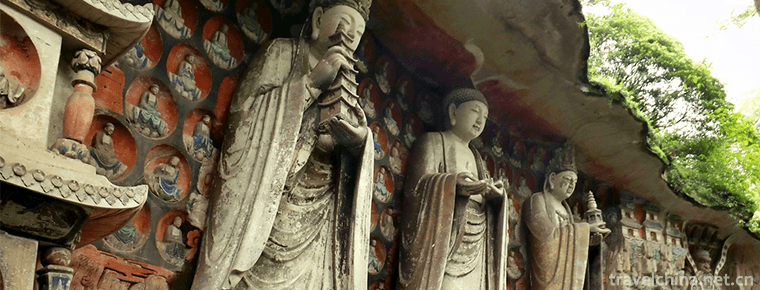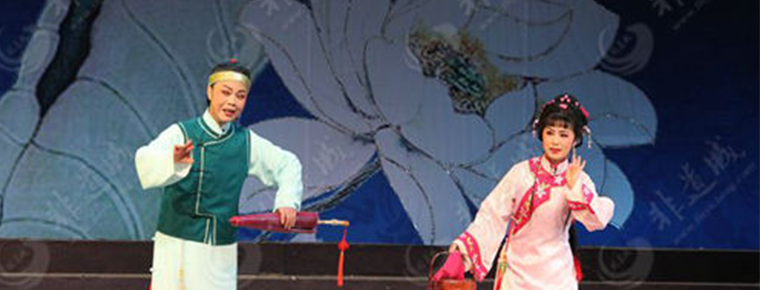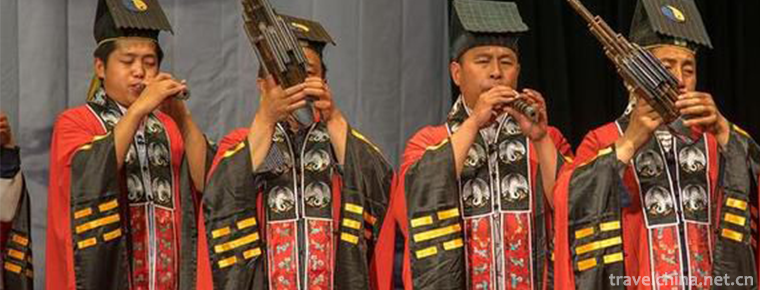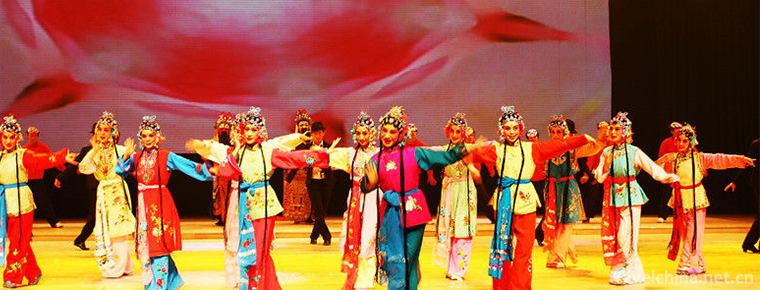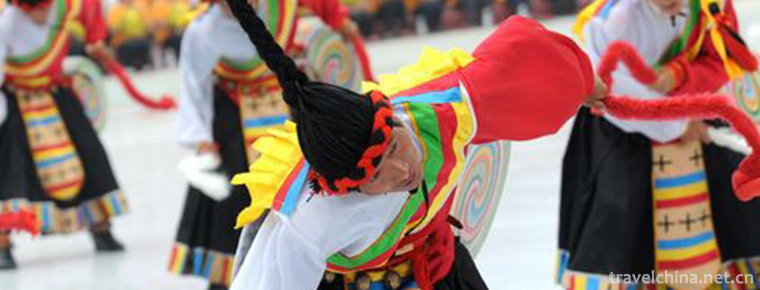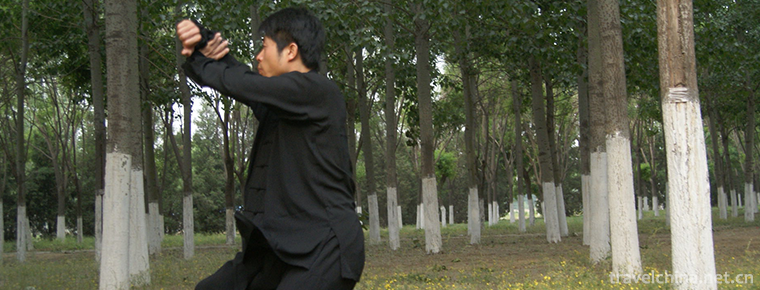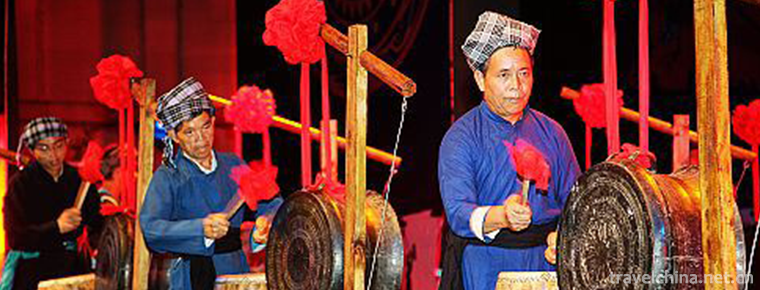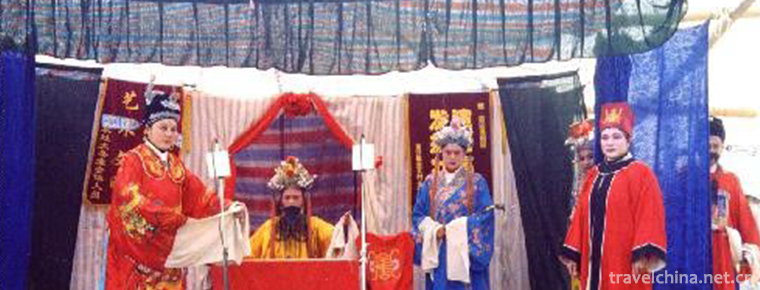Performing and Making Skills of Qiang Flute
Performing and Making Skills of Qiang Flute
Qiang flute is an ancient single-reed gas singing instrument in China. It has a history of more than 2000 years. It is popular in the Qiang people's residence of Aba Tibetan Autonomous Prefecture in northern Sichuan. Qiang flute has two pipes with several holes (five holes in the past and six holes in the present). It is made of bamboo oil grown on the local mountains. The bamboo knots are long and the pipes are thin. The two pipes are twined and connected side by side with wires. Lifetime full length 13-19 cm, pipe mouth diameter about 2 cm, flute tube upper end with 4 cm long bamboo blowing mouth. The front of the blowing nozzle is flattened with a knife, and at the upper end about 3 centimeters, a thin sheet is cut with a knife as a reed. It is mainly used for Solo performance, with more than ten ancient music cards. The content of the music is quite extensive, mainly to convey the yearning of the Qiang people.
The Qiang flute is played vertically with two pipes of the same pitch, clear and loud tone, and with a sense of sadness, "Why does the Qiang flute complain about willows, the spring breeze does not pass through the Yumen Pass" is the best portrayal of its expressive force, so it is most suitable for solo, but also for singing and dancing accompaniment.
On May 20, 2006, the performance and production skills of Qiang flute were approved by the State Council and listed in the first batch of national intangible cultural heritage list.
historical origin
Qiang flute and flute are very different, they are two different concepts. In Ma Rong's Flute Fu of the Han Dynasty, "In modern times, double flutes began in Qiang Dynasty, and Qiang people cut bamboo before they could reach it. Dragon chants disappeared in the water, and the sound of cutting bamboo and blowing was similar... Therefore, it can be seen that the Qiang flute was already spread in Gansu, Sichuan and other places in the Han Dynasty, and it can be inferred that the Qiang flute at that time was a double-tube four-hole flute. In Tang Dynasty, Qiang Di was a common musical instrument on the frontier fortress. It is worth mentioning that Qiang Di did not appear in the "ten pieces of music" of Tang Dynasty. It can be seen that Qiang Di in Tang Dynasty was only a musical instrument seen in the frontier fortress, not formally entered the court or army of Tang Dynasty, but a self-entertaining musical instrument used by ethnic minorities or soldiers in the army.
The records of Qiang flute are often found in the poems of literati in Tang, Song, Yuan and Ming dynasties. In Maowen Qiang Autonomous County and Heishui County of Sichuan Province, we can still see this kind of musical instrument with Tang and Song Dynasty relics. They are made of two oil bamboos of the same length. The tubes are cut into square columns and tied together. At the top of each tube, there is a blowing tube with bamboo reeds, vertical blowing. The specifications are 17 cm and 19 cm. The tone is high and slightly sad. Sensation is the main musical instrument that people often use during the festival and the festival. It's also a way for a young man to express his love to a girl.
The Qiang flute in Chibusu and Shaba areas was brought from the western region by the Qiang people who moved south during the war years of Qin and Han Dynasties. According to historical records, there were four holes on the surface of the Qiang flute before the Western Han Dynasty. In the 1st century AD, it was made into five holes by the musician Jingfang plus a treble press hole. Ma Rong in the Eastern Han Dynasty had a description of "double flutes from Qiang in modern times" in Flute Fu. In modern times, the Qiang flute has become six holes. It can be inferred that the Qiang flute has existed for at least two thousand years.
artistic characteristics
The voice of the Qiang flute often gives people an illusory and moving feeling. The Qiang people often use it to express their feelings of joy, anger, sadness, joy and separation.
The Qiang flute is played mainly by the method of breathing through the gills. It can be played for several minutes in one breath. Even if it is a simple tune, its technical requirements are very high. In addition, the Qiang flute also has the skills of throat tremolo and finger up-down glide in playing. In addition, the tone of the two-pipe system is different in rhythm and Oboe resonance, so its quality and melody are unique.
In making Qiang flute, arrow bamboo with straight pole, cylinder and section length, uniform head and tail, thick and thin bamboo flesh, tough texture, fine fibers, and not easy to crack is usually used as material. The pitch of the tube must be accurate and equal according to the length, thickness and size of the tube. Otherwise, the pitch of the hole must be different.
Representative works
The repertoires often played are "Folding Liu Ci", "Ideological Song", "Sharon Song" and so on.
Inheritance significance
Because the Qiang people have no written language, their history and culture are not only imparted orally from generation to generation, but also become an important channel for communication and inheritance of national culture. The Qiang flute's melody, timbre and playing skills are unique and rare treasures in the treasure house of our national musical instruments.

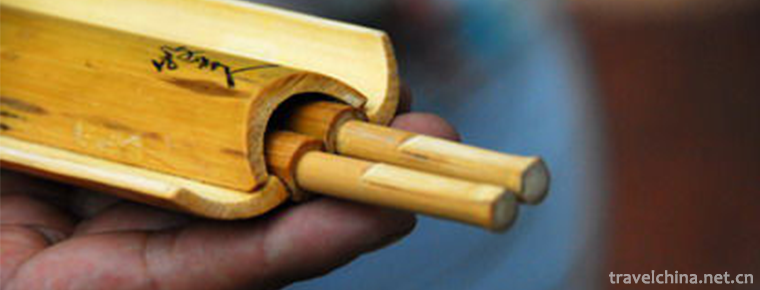
-
The Dazu Rock Carvings
Dazu Stone Scenic Area is a religious cliff sculpture in the late Tang and early Song Dynasty, with Buddhist themes as the main theme, especially the Beishan Cliff sculpture and Baoding Mountain Cliff.
Views: 204 Time 2018-12-12 -
Nanwan Lake Scenic Area
Nanwan Lake, also known as Nanhu Lake, is located in Xinyang City, Henan Province. It is known as the "Pearl of South Henan" and is a famous natural scenic spot of Nanwan Lake. All around th.
Views: 183 Time 2019-02-07 -
Gulunmu Festival of Oroqen Nationality
The Oroqen ethnic group is one of the minorities with a small population in China. Since ancient times, it has multiplied and lived in the deep forest of Heilongjiang Valley and Xing'an Mountains.
Views: 147 Time 2019-04-28 -
Lake Opera
Huzhou Tanhuang, originally known as Huzhou Tanhuang, is a traditional local opera. It is mainly popular in Huzhou, Jiaxing, Yuhang and Linan of Hangzhou, Wujiang and Yixing of Jiangsu, Guangde of Anh.
Views: 119 Time 2019-05-03 -
Sheng Guanyue in Jizhong
Jizhong Sheng wind music is popular in Jizhong Plain, that is, south of Beijing, west of Tianjin, north of Cangzhou and Dingzhou frontline nearly 30 counties and cities of traditional drum music varie.
Views: 303 Time 2019-05-05 -
Mongolian camel raising custom
The Mongolian camel-raising custom has a long history. In the practice of production and life with a long history, camel has become the most loyal partner of mankind while making outstanding.
Views: 84 Time 2019-06-04 -
Western Fujian drama
Western Fujian Han Opera, formerly known as "Waijiang Opera", also known as "Ran Tan", is one of the local operas in Fujian. He was born out of foreign operas, absorbed Hakka diale.
Views: 205 Time 2019-06-05 -
Guozhuo Dance in Shannanchang
Shannanchang Guozhuo Dance is a kind of waist drum, which originated in Dabu (now Jiacha) area. Legend has it that in the mid-eighth century, with the help of Buddhist masters such as lotus and peanut.
Views: 163 Time 2019-06-13 -
Mantis Boxing
Mantis boxing is one of the famous Chinese traditional Wushu schools, and it is a kind of hieroglyphic boxing. It is one of the four famous boxing in Shandong Province and one of the first nine school.
Views: 140 Time 2019-06-18 -
Twelve tunes of bronze drum
The Buyi bronze drum is one of the ancient percussion instruments of the Buyi nationality, which belongs to the precious national cultural heritage. It is made of bronze, often mixed with Suona, drums.
Views: 110 Time 2019-06-21 -
Childrens play
Tongzi Opera is a form of performance in folk prayer activities in Jiangsu Province. It is popular in Nantong City of Jiangsu Province and in the central and western parts of Tongzhou City and its sur.
Views: 194 Time 2019-06-23 -
Bengbu Medical College
Bengbu Medical College (Bengbu Medical College) is Anhui Province The provincial general higher medical colleges and the first batch of units granted the right to grant bachelor's and master's degrees.
Views: 82 Time 2019-11-08
